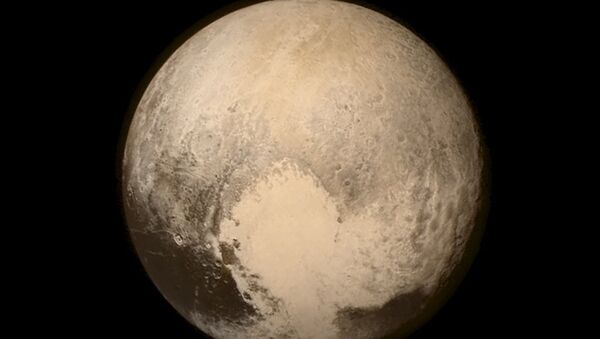WASHINGTON (Sputnik) — Scientists will be announcing more discoveries about Pluto as significant amounts of data from the New Horizons spacecraft flyby of the frozen planet are expected to arrive in the coming weeks, National Aeronautics and Space Administration (NASA) Planetary Science Division Director Jim Green said on Friday.
“Right now we have only received 1 to 2 percent of that data on the ground, by next week we will have as much as 5 or 6 percent, so some of the discoveries… are only the tip of the iceberg,” Green told journalists.
Based on the data received so far, scientists understand the planet has a thin atmosphere made of nitrogen, methane and even has a concentrated spot of carbon monoxide. Vast amounts of ionized nitrogen are leaking out of the atmosphere, creating a tail.
Soaring mountains and pockmarked surface craters that could be billions of years old, alongside newer geologic structures of flat plains, indicate the planet experiences erosion, scientists said. A fractured surface indicates there could be tectonic movements in the crust.
The New Horizons spacecraft took nearly ten years to reach Pluto.


